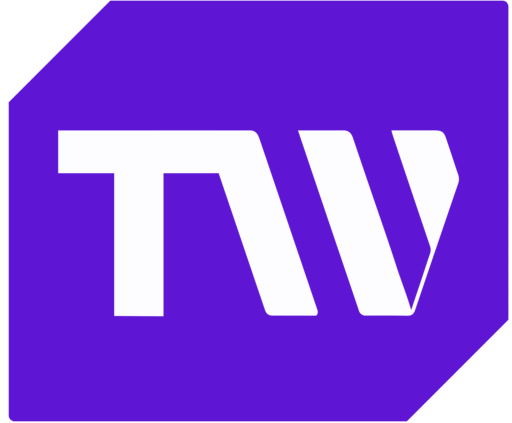Want To Become a Backend Developer in 2025? Here’s how.
What is Backend Development?
When you enter a website link into Google, it takes a few seconds to load. Why?
That’s because the website has to connect to a storage (server) where the information is stored. It then fetches it and bring it to you, the end-user, to see. The set of tools (or codes, in this case) that “spoke” to the server is the backend.
The part that is presented to you is the “frontend”.
Backend development, therefore, involves developing parts of a program’s code that handle the functionality and logic of a website or application. It consists of the Servers, Databases, Application logic, and APIs that help the client-side interact with the server.
Don’t worry, these are concepts that you’ll understand later in this article
The backend can be described as the “behind-the-scenes” codes responsible for the optimal functioning of a website – from loading web pages to retrieving data from databases. That’s why they’re called the “backend.”
These are things you might not often think about, but they’re crucial for providing a seamless user experience.
A Backend Developer or Engineer is responsible for writing these vital backend programs. Remember, the set of tools (or codes) that “spoke” with the server is the backend, while the part you interact with is the “front-end.”
This will bring us to discuss two key terms before we dive deeper into backend development.
2 Key Sides of Backend Development: Client-Side & Server-Side
A quick one, the client-side is the side where the user can view content and interact with the website.
The client-side refers to the parts of a website which the user is in contact with. This is also called the front-end. This defers from the server-side which is the area hidden from users. The server-side is essentially the backend.
You’ll find that these terms are used in programming often, so it is important to understand them.
To help you understand better and because I assume you love maths, I came up with these equations:
Client-side = User-side = Front-end
Server-side = behind-the-scenes = backend
How To Become a Backend Developer
If you’re here, you’re likely considering a career in backend development or have already started learning and need a roadmap. This guide will outline the key steps to help you navigate your learning journey.
- Choose a Programming language
A programming languages refers to instructions with specific formats that a developer (or programmer) sends to a computer so it can execute tasks.
In backend development, programming languages are syntaxes that are used to develop the server-side of a website. As a backend engineer, learning programming languages is essential.
As a beginner in backend development, here are some languages you can start with:
JavaScript, Python, Ruby, Java, C#, Rust, PHP and Golang.
According to Stack Overflow’s Developer Survey 2023, some of the most popular ones are JavaScript, Python, Java, and PHP.
Choosing the right language can be tricky for newcomers. So here are a few factors you want to consider:
- Ease of learning: Is the language beginner-friendly? Are there ample resources to help you learn?
- Community support: Does the language have an active community for support and guidance?
- Programming Experience: Do you have prior programming knowledge? If so, what language might complement your existing skills? Or are you starting from scratch?
- Framework Maturity: Are the main frameworks well-developed and reliable?
- Job Opportunities: Is the programming language in high demand? Is it widely used in the tech industry?
If you’re still unsure where to start, I’d recommend Python as it’s easier to learn and has a robust community.
- Learn Version Control Systems:
Learning to use Version Control Systems is an important software development practice.
Version Control Systems are tools for tracking modifications made to codes and digital assets. When changes are made to code files, users can easily track “who worked on what”. It also allows users to revert to a certain version of a code file in case a new version isn’t working correctly. Basically, they help you collaborate with others and manage project versions.
Version Control Systems are also known as Source Code Management (SCM) tools.
Common examples of Version Control Systems include Git, ClearCase and Helix Core.
Version Control Systems are often confused with Repository Hosting Systems.
Repository Hosting Systems allow developers store and manage their code files. They provide digital storages (repositories) that allow developers make changes to an app’s code file (known as source code). Examples are GitHub, GitLab, AWS CodeCommit, and Beanstalk.
Note: GitHub is a Repository Hosting System that makes use of Git, a Version Control System.
- Choose a Framework
Web frameworks are tools used by software developers to support the development of web applications and websites. Frameworks simplify the development of web applications by providing pre-built libraries, structures, and tools.
That way, you can code faster without having to write the code from scratch. Some common frameworks include:
- Python-Based: Django, Flask
- JavaScript/TypeScript-Based: Express.js, Nest.js, Fastify.js
- Ruby-Based: Ruby on Rails
When choosing a framework, it is important to consider factors such as its scalability, performance, and ease of use.
- Understand Databases
A database is a collection of data organized for easy storage and retrieval when needed.
Databases are critical for ensuring that web applications retain data even when servers are inactive. Imagine losing all your WhatsApp chats or Youtube history
overnight due to server issues. That would be tragic, right?
The common types of database are:
- Relational Databases: They are more suitable for storing structured data. Examples are MySQL and PostgreSQL.
- NoSQL Databases: They are flexible as they store unstructured or semi-structured data. For example, social media posts.
Understanding how databases work is vital and something you’ll continue to explore as you advance. Once you can deploy your built application to a server, you can keep honing your database skills on the side.
- Master Data Structure and Algorithm:
As a Backend engineer, it is important to have basic knowledge of data structures and algorithms.
DSA is crucial for backend Developers as it helps in optimizing the performance of server-side applications by enabling efficient data handling. DSA knowledge is key to solving complex problems that often arise in backend development so you’ll likely continue learning it as time goes on.
- Get Familiar with APIs (Application Programme Interfaces)
APIs are software with very specific functions. They enable different applications to communicate and share resources.
API architecture is often explained in terms of client and server. The client “requests” a piece of infromation and the server “responds” by delivering the information, but through who (or what)? Through the API.
APIs allow apps or websites to connect with existing data sources. Just like the USB cord that connects your phone to your laptop.
There are four main types of APIs which are: SOAP APIs, RPC APIs, Websocket APIs and REST APIs.
As a beginner, you can start by learning REST APIs – how they work, various request types, and some basics of HTTP and HTTPS.
- Learn About Caching
Caching involves storing copies of frequently accessed data in a temporary storage. This ensures that they can be fetched easily when needed.
It helps reduce latency and improve performance. Though it might not be especially used in backend, its still important to learn it as a tech person.
Imagine keeping extra pens in your backpack because your best friend will likely need it. It’ll save you the stress of having to go to the store to get a new pen every time, right?
- Practice Web Testing
Web testing is also a necessity in backend development.
A car manufacturer would test a car before releasing it to the market to be sure of its efficiency.
That’s similar to how web testing helps a backend developer. It helps identify vulnerabilities in the system security and potential defects that may later occur.
- Documentation: Documentation helps other developers understand your code such as what an endpoint does, what kind of input a field can take and so on.
You do not want to write a code that will leave other developers with a headache, right?
It is therefore important to understand the use of documentation tools such as Swagger, Open AI, Postman.
Conclusion
Embarking on the journey to become a backend developer is both challenging and rewarding.
By mastering the key skills outlined in this guide, you’ll be well on your way to becoming a skilled backend developer. Every great website or app relies on the expertise of a backend developer to ensure everything works seamlessly behind the scenes.
So code your way to the future!

